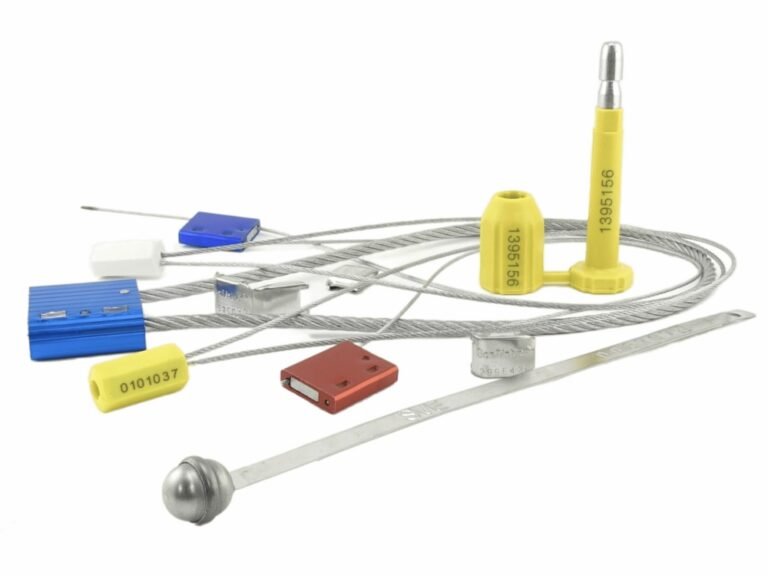You're relying on shiny stickers to protect your brand, but you suspect they might just be pretty decals that counterfeiters can easily copy. This leaves your products and reputation dangerously exposed to fakes.
A hologram sticker is a security device containing a microscopic physical structure, not ink. This structure manipulates light waves to project a three-dimensional image into your eye. Its security lies in the fact that this microscopic "sculpture" cannot be copied by a scanner or printer.
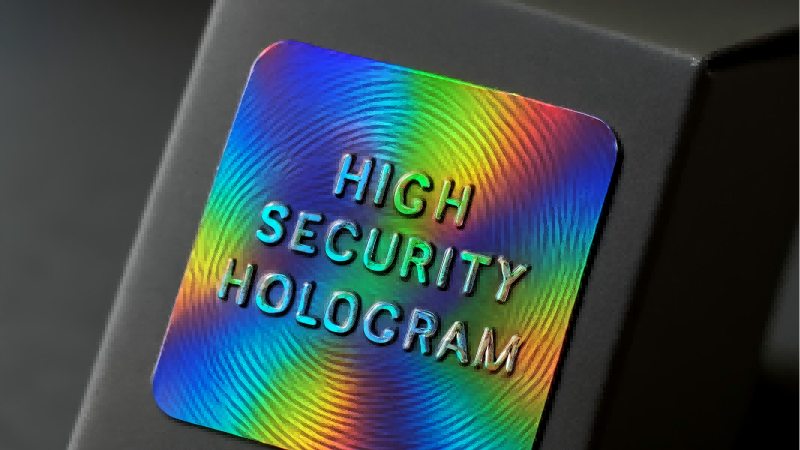
I need to start by clearing up a huge misconception. In my experience, even many people in the industry get this wrong. They believe a hologram sticker is just ink printed on a special iridescent paper that sparkles. This is completely false.
The way a hologram sticker works has nothing to do with any kind of "printing" that we know in our daily lives. Its security is rooted in a fundamental truth: its image is not "drawn" with ink; it is physically "carved" with light waves. It's essentially an invisible, microscopic landscape that bends and reshapes light, creating an image out of thin air that appears in your eye.
Why Is a Hologram Sticker More Than Just a Shiny Decal?
You see a rainbow shimmer and assume it's a hologram. But many cheap, shiny stickers offer zero security, making you vulnerable to counterfeiters who can easily replicate that simple sparkle.
A true hologram is a piece of light-sculpting technology. The image is formed by microscopic grooves and ridges—up to 100,000 per inch—embossed into a material. These structures diffract light at different angles, creating the illusion of depth, movement, and color change.
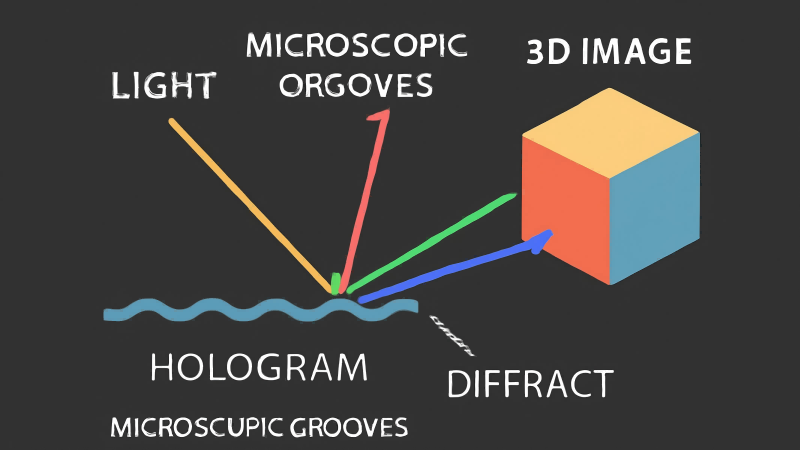
The best way I can explain this is with an analogy I use with all my clients: you can photocopy a painting, but you cannot photocopy a sculpture. A painting is a two-dimensional image made of ink on a flat surface. A scanner can easily capture and reproduce it. A sculpture, however, is a three-dimensional physical object. It has depth, texture, and changes its appearance as you move around it. A photocopier is useless.
A hologram is a light sculpture. Its security is based on this exact physical principle. Cheap iridescent stickers are just the "painting"—a flat, shiny surface. A real hologram is the "sculpture"—a complex physical terrain that can't be replicated. It must be physically re-created, which is an incredibly difficult and expensive process.
How Do You Verify Authenticity with a Hologram Sticker?
Your staff or customers see a sticker, but they don't know what to look for. Without a clear verification method, the hologram is useless as an anti-counterfeiting tool.
To verify a hologram, don't just look at it—interact with it. Tilt the sticker back and forth under a light source. A genuine hologram will display parallax (elements appearing to be on different planes) and true color shifts as the viewing angle changes.

Training your team and even your end-users on how to spot a real hologram is a crucial step. It’s a very quick process once you know what you’re looking for. Forget about the rainbow sheen for a moment; that’s easy to fake. Instead, look for these two signs of a true, multi-dimensional hologram.
Verification Checklist:
Check for Depth and Parallax: This is the most important test. Parallax is the effect where foreground objects appear to move against the background as you change your viewing angle. In a good hologram, you should see some elements floating "above" the sticker's surface and others deep "inside" it. A flat sticker has zero parallax.
Look for True Color and Image Changes: As you tilt the hologram, the colors should shift through the spectrum. In more advanced holograms, completely different images can appear and disappear at different angles. This effect, known as kinematic animation, is a hallmark of a complex, secure hologram.
If the sticker just has a static rainbow shimmer but no sense of depth, you are likely looking at a cheap imitation.
What Makes a Hologram Sticker So Difficult to Counterfeit?
You want a security feature that offers real protection. You're concerned that determined counterfeiters with advanced technology can simply copy whatever you use, making your investment worthless.
A hologram sticker is difficult to counterfeit because it requires creating a master hologram. This process, called holography, uses laser interference patterns to record a 3D image onto a photosensitive plate. This requires highly specialized, expensive equipment, a vibration-free environment, and deep expertise.
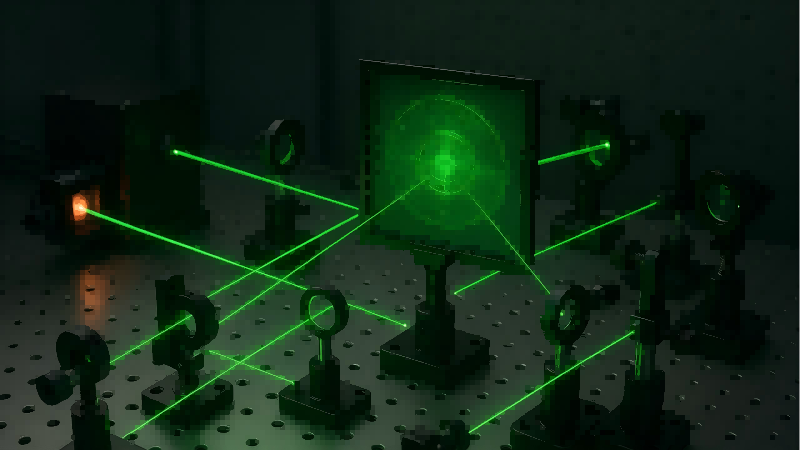
Let's go back to the sculpture analogy. Anyone with a printer can copy the Mona Lisa. But to copy Michelangelo's David, you need to be a master sculptor. The barrier to entry is in a completely different dimension.
The process of creating a master hologram is the modern equivalent.
- The "Studio": An optical table that costs tens of thousands of dollars to eliminate micro-vibrations.
- The "Chisels": A complex system of coherent lasers, beam splitters, and mirrors.
- The "Marble": A special photosensitive glass plate.
- The "Sculptor": A physicist or optical engineer.
A counterfeiter can't just click "print." They would have to invest in a full holography lab. This makes reverse-engineering a custom hologram economically unfeasible for most criminals.
Are All Hologram Stickers Created Equal?
You've seen holograms that look simple and others that look incredibly complex. You need to know if the "basic" holograms are secure enough, or if you need to invest in more advanced options.
Absolutely not. Holograms exist on a spectrum of complexity. A simple 2D/3D hologram offers basic protection, while advanced dot-matrix or e-beam holograms incorporate microscopic features that are virtually impossible to copy.
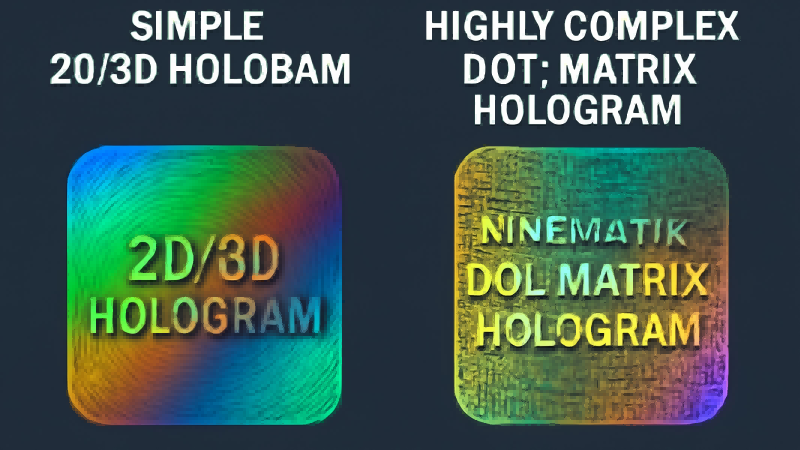
Understanding the different levels of hologram technology is key to making a smart investment. The right choice depends on your product's value and the threat level.
| Hologram Type | Description | Security Level | Best Use Case |
|---|---|---|---|
| 2D/3D | Layers of flat, 2D images are placed at different depths to create a basic 3D effect. | Low to Medium. Most common type and more susceptible to replication. | Promotional items, lower-value goods. |
| Dot-Matrix | Image is composed of millions of microscopic dots, each a tiny diffraction grating. Allows for complex kinematic effects. | High. Requires more advanced equipment and is very hard to copy. | Pharmaceuticals, electronics, ID cards. |
| E-Beam | Master is created using an electron beam, allowing for nanoscopic features, hidden text (microtext), and other covert security elements. | Very High. Pinnacle of technology, nearly impossible to counterfeit. | Banknotes, passports, high-security documents. |
As you move up the ladder, the cost increases, but the security level increases exponentially.
How Does Customization Elevate a Sticker's Security Level?
You're using a generic, off-the-shelf "Genuine" hologram. This is better than nothing, but savvy counterfeiters can buy the exact same sticker, rendering your protection useless.
Customization transforms a generic security feature into a unique brand asset. By embedding your logo, a unique serial number, or a proprietary design into the hologram itself, you create a feature that is exclusively yours and cannot be bought on the open market.

This is one of the most important conversations I have with my clients. A stock hologram is a generic lock. A custom hologram is a patented lock that only you hold the key to.
Here’s how customization builds a fortress around your brand:
- Unique Designs: Weaving your logo into the holographic layers makes it proprietary. A counterfeiter must try to replicate your specific design, which is vastly more difficult.
- Adding Serial Numbers: We can laser-etch serial numbers onto each sticker. This allows for track-and-trace functionality, fighting gray market diversion as well as counterfeiting.
- Combining Technologies: A powerful solution is to combine a custom hologram with a tamper-evident feature (e.g., a "VOID" pattern). This protects against both counterfeiting and tampering, offering two layers of security in one device.
Conclusion
A hologram is not a shiny print; it's a microscopic sculpture of light. Its security comes from its physical complexity, making it nearly impossible to copy with standard technology.
Secure Your Brand with True Holographic Technology
Don't settle for shiny decals that offer a false sense of security. At ProtegoSeal, we create custom, high-security hologram stickers built on true holographic principles. Contact us to design a unique solution that provides uncompromising protection for your brand.

